I’ve always been a PC enthusiast, even when other content creators were brandishing MacBooks. I’ll say up front that I don’t game, so everything I do on a laptop revolves around video editing. To manage this, I use a high-end Windows desktop at home, and until recently had a Gigabyte Aero 15X laptop for video editing on the go.
Then the Aero 15X died. The keyboard stopped working and the Lightning port failed. I didn’t even really grieve the loss – it was still loud and hot. Battery life was never great and to do serious video work I had to plug it in with a comically large and heavy power brick.
-
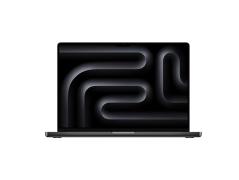

Apple MacBook Pro 2023 laptop (M3 Pro chip)
It was time to buy a new laptop, but I had no plans to relive my Gigabyte experience. Instead, I wanted a light, powerful, cool computer with long battery life. I needed to edit a 4K video on DaVinci Resolve while performing color correction, adding effects and titles. I also do RAW photo editing, so I would use Photoshop and Lightroom regularly.
I had considered an M3 MacBook Pro, but thought it would be too expensive. After checking, I was surprised to find that the gap between the price of a new MacBook Pro and that of a Windows laptop with similar performance has narrowed since Apple started using its own silicon .
So I took the plunge and bought a 16-inch MacBook Pro with an M3 Pro chip (12-core CPU and 18-core GPU), 36 GB of RAM and 512 GB of storage. From what I had read, this would be enough to handle difficult edits. I paid $3,100 in Canada including tax, with the same machine selling for about $200 less in the United States.
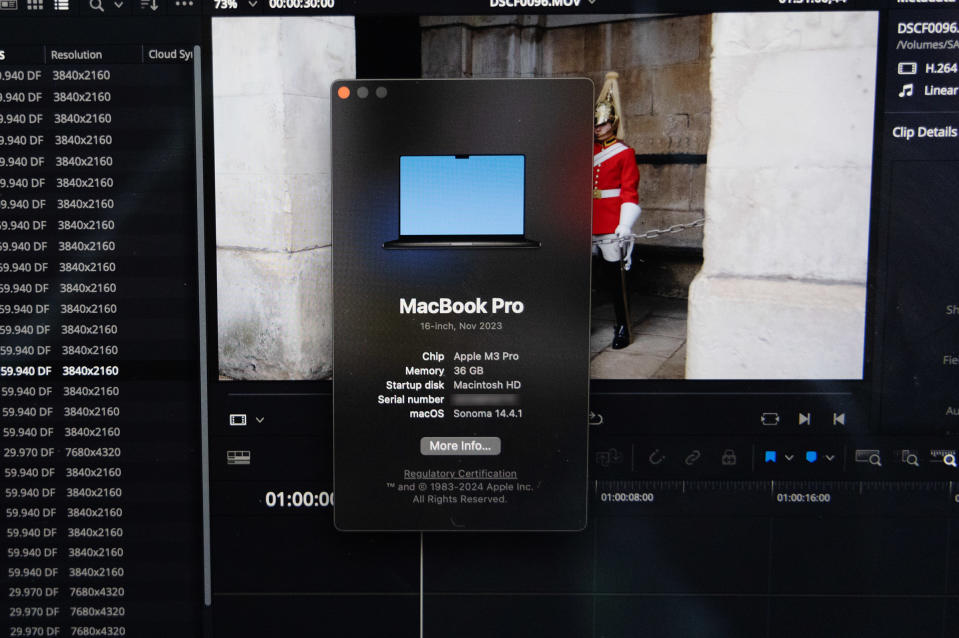

I immediately put my new MacBook to work when I created a video review of the Nikon Z8 in Vancouver. Later, I edited a review of the Fujifilm X100 VI in London and made a hands-on video for the Panasonic S9 camera from Japan. These projects gave me a good idea of the MacBook’s performance, battery life, and usability on the road.
Back home, I was curious to compare the MacBook to my desktop computer. While it’s not cutting edge, it still packs impressive specs with a 12-core AMD Ryzen 9 5900 CPU, NVIDIA RTX 3080 Ti GPU, and 64GB of RAM.
I use mirrorless cameras like the Canon EOS R6 II and Panasonic S5 II, which produce up to 6K 10-bit 4:2:2 Log H.264 or H.265 Quicktime. These formats generally tax a computer’s CPU and GPU, so I wasn’t expecting real-time playback.
However, I noticed that I could play these video files smoothly in DaVinci Resolve on my MacBook Pro without requiring rendering or conversion. I can’t do this on my well-equipped desktop computer, so what was going on?
It turns out that even recent NVIDIA and AMD GPUs can’t decode many of these commonly used formats in real time, as systems integrator and benchmark specialist Puget Systems recently revealed. This is achievable with some formats (not H.264) on newer Intel processors with Quick Sync technology on DaVinci Resolve 18 Studio or later.
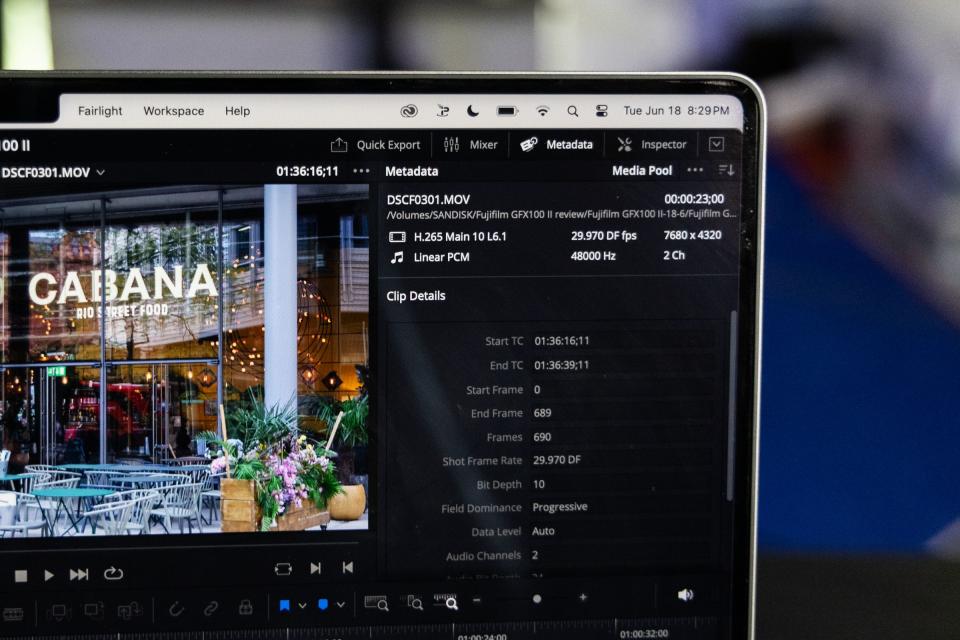

The ability to edit these files directly from the camera was a major quality of life improvement, as it eliminated a time and storage wasting step.
I also experienced real-time playback on my Mac in most cases without rendering. This includes footage with 6K and 8K video, color correction on most clips, titles, multiple layers, time warping and optical flow stabilization.
On the other hand, my high-end desktop requires me to not only convert my video files, but also enable timeline rendering, especially with 6K or 8K video. Both of these things take time and can consume hundreds of gigabytes of disk space.
While the MacBook felt quick, I also wanted to see more objectively how it compared to my Windows machine. I used the PugetBench Creator benchmark suite, which compares machine performance on commonly used creative applications like Photoshop, Premiere Pro, and Davinci Resolve.
Since my PC didn’t work as well for video editing, the results surprised me. The MacBook Pro M3 came out on top in Photoshop tests, earning an overall score of 10,076 compared to my desktop’s 7,599. This is largely due to the superior M3 processor.
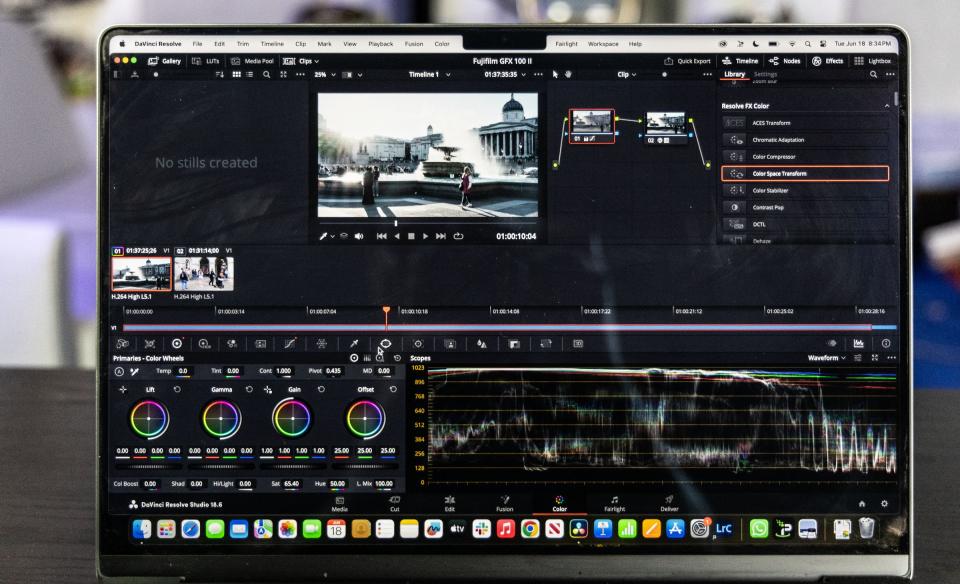

However, my PC significantly outperformed the MacBook Pro at video editing, thanks to its faster GPU. The Apple machine achieved an overall score of 4,754 in Premiere Pro PugetBench tests in high-power mode, while my PC achieved 8,763.
There are no public PugetBench tests for DaVinci Resolve yet, but Puget Systems’ own scores show that high-end PCs significantly outperform high-end MacBook Pro models on this application. The PC is generally better when working with RAW formats and easily beats the MacBook Pro for GPU effects, AI features, and encoding in H.264 and H.265 formats.
These results show that benchmarks do not give the complete picture. The relative power of a computer depends on what you do with it, and in my case the ability to edit certain video formats without rendering outweighed pure speed. However, people who use more effects or work with ProRes or RAW formats might benefit from using a powerful PC.
That said, a lot of things I hated about my Windows laptop had nothing to do with performance. I’ve often been annoyed by my Aero 15X’s weight (if you include the power supply), heat, noise, build quality, and relatively useless trackpad.
Since purchasing the MacBook Pro 16, I’ve never felt it get too hot and the fans rarely kick in, even when editing video. In contrast, I’ve heard of a single Windows creator PC that doesn’t generate excessive heat and fan noise under heavy loads.
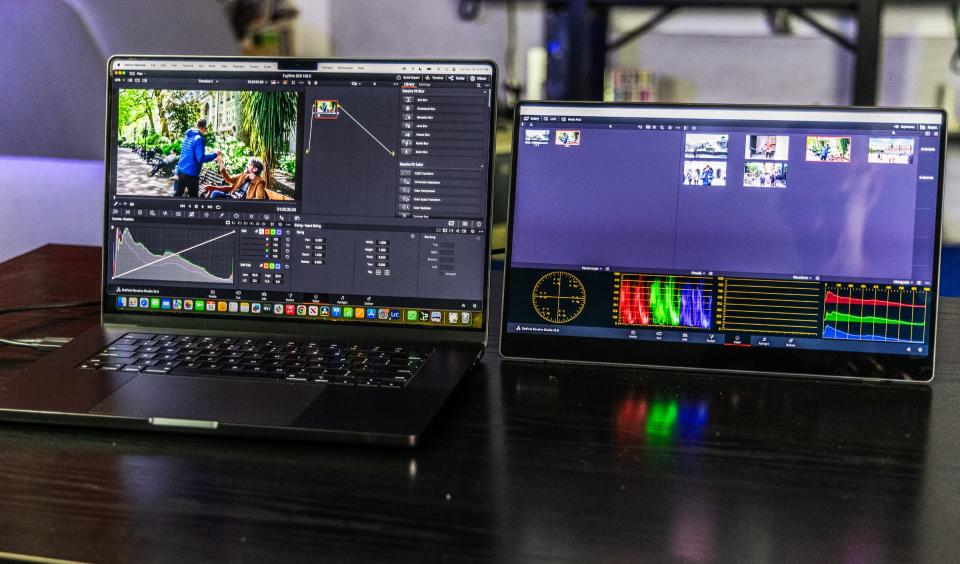

Another major advantage of the MacBook is that it offers the same performance whether plugged in or not, but the same cannot be said for most PCs. Many slow down when unplugged, significantly reducing performance.
If you need to edit on the go and don’t have access to AC power, the MacBook wins here too. When editing on DaVinci Resolve, the job can last three to four hours on battery power alone, triple what my Gigabyte laptop could do. And it only takes 1.5 hours for the MacBook Pro to fully charge, compared to around 2 hours minimum for Dell’s XPS 17 9730. It also loads much faster.
It’s also less of a hassle to carry around than my Aero, as it weighs less and the charger is also much lighter. Finally, the trackpad is much better, to the point where I can even edit videos without a mouse, something I could never say with the Aero or any other laptop I’ve owned.
Not everything is perfect, because I don’t like the webcam notch, but otherwise the MacBook Pro 16 M3 is perfect. As it stands, Windows laptops using Intel and AMD silicon might be able to match on performance, but they lag far behind on efficiency. That might change with new Qualcomm laptops or the upcoming NVIDIA 5000 series GPUs, but for now, Apple’s products are hard to beat for traveling content creators like me.